UPSC Daily Current Affairs: 17 July 2024 | Current Affairs & Hindu Analysis: Daily, Weekly & Monthly PDF Download
GS2/Polity and Governance
Centre Reconstitutes NITI Aayog
Source: Mint
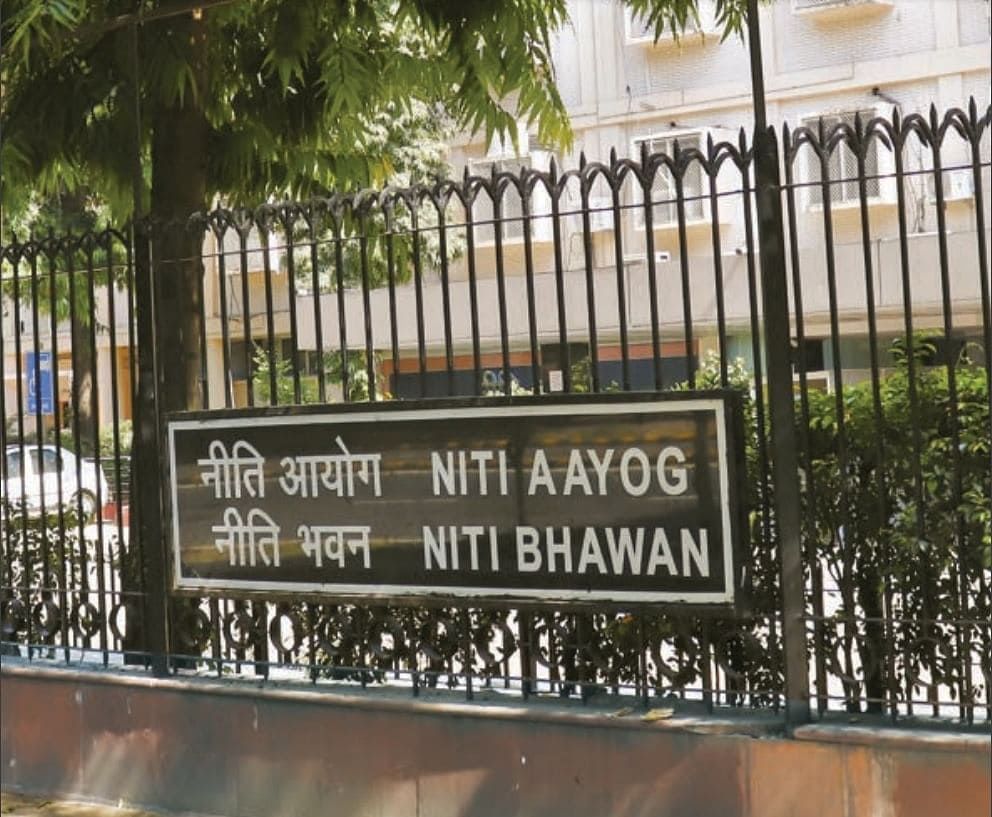
Why in news?
The Centre has reconstituted the NITI Aayog with 15 union ministers, including those from NDA allies and four full-time members, being a part of the government think-tank. The government reconstituted NITI Aayog after changes were made in the council of ministers.
About:
- NITI Aayog was established on 1 January 2015, replacing the Planning Commission founded in 1950.
- It acts as the principal policy think tank of the Indian government, offering directional and policy inputs.
- NITI Aayog serves as a platform for States to cooperate in national interest, promoting cooperative federalism.
Composition
- Chairperson: The Prime Minister of India
- Vice Chairperson: Appointed by the PM, holds the rank of a Cabinet Minister.
- Full-Time Members: Hold the rank of a Minister of State.
- Part-Time Members: Maximum of 2.
- Ex-Officio Members: Up to 4 Union Council of Ministers members nominated by the PM.
- CEO: Appointed by the PM, holds the rank of Secretary to the Government of India.
- Special Invitees: Experts in relevant domains nominated by the PM.
Governing Council of NITI Aayog
- The primary body responsible for shaping national priorities and strategies with State participation.
- Facilitates discussions on inter-sectoral, inter-departmental, and federal issues for speedy national development agenda implementation.
- Composition includes Chief Ministers, Lt Governors, Vice Chairman, Full-Time Members, and Special Invitees.
Performance of NITI
- As an Action Tank: Collects and shares innovative ideas to ensure organizational activity at all levels.
- Improving Innovation: Atal Innovation Mission enhances India's innovation ecosystem.
- Enhancing Accountability: Development Monitoring and Evaluation Office ensures data-driven performance evaluation.
Important Initiatives
- Ayushman Bharat, water conservation, and artificial intelligence strategies originated from NITI Aayog.
- POSHAAN ABHIYAAN tackles child malnutrition effectively.
NITI Aayog: Promoting Federalism
- Cooperative Federalism: Facilitates direct interaction between States and Central Ministries for issue resolution.
- Competitive Federalism: Emphasizes sectoral indices and governance improvements.
GS3/Environment
Govt to Review Clean Air Action Plan of Cities
Source: Indian Express
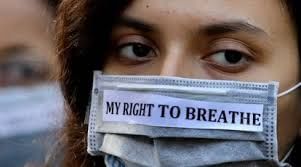
Why in News?
The Government is set to review the air quality improvement action plans of 131 cities as part of its 100-day agenda.
About National Clean Air Programme (NCAP)
National Clean Air Programme (NCAP) is an extensive initiative launched by the Indian Government to combat air pollution nationwide.
Objectives of NCAP
- NCAP aims to achieve a 40% reduction in particulate matter concentrations by 2026.
Key Features of NCAP
- City-specific plans tailored for 131 non-attainment cities.
- Focus on monitoring and enforcement of air quality regulations.
- Promotion of public awareness and participation in pollution control activities.
- Emphasis on inter-agency coordination for integrated pollution control measures.
Progress and Challenges
- Air Information Centers and Pollution Forecasting: Efforts to establish regional air information centers and pollution forecasting systems are ongoing.
- Committee Setup and Fund Utilization: Challenges persist in the functionality and transparency of committees and fund utilization.
- Monitoring Stations: Expansion of monitoring stations is in progress, albeit with shortfalls in operational stations.
- Data Availability and Compliance: Efforts are being made to improve data availability and compliance with air quality standards.
Upcoming Review
- The review will focus on actions taken by city administrations in key areas like dust control, electric vehicle infrastructure, public transport enhancement, waste management, and urban greening.
- Emphasis will be on quick fund utilization to address concerns raised by the National Green Tribunal regarding unused funds.
GS3/Science and Technology
Analysing the Progress of Quantum Technology in India
Source: Times of India
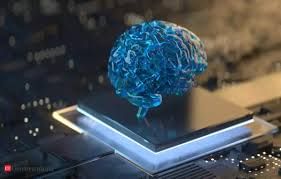
Why in News?
In 2023, India initiated the National Quantum Mission, marking a significant step towards leveraging quantum technologies. Despite possessing a robust research foundation in quantum science, India trails behind China and the US.
What is Quantum Technology?
Quantum technology, originating in the early 20th century, operates on the principles of quantum mechanics. This field encompasses phenomena exhibited by subatomic particles such as quantum entanglement and quantum superposition, distinct from the behavior of macroscopic objects governed by Classical Physics.
The principles behind quantum technology:
- Quantum technology relies on the principles of quantum mechanics, including phenomena like quantum entanglement and quantum superposition.
Applications:
- Quantum technology finds applications in various domains like navigation, communications, healthcare imaging through quantum sensing, and quantum computing.
Progress in India:
- India is actively investing in quantum technology, exemplified by significant allocations in the Union Budget 2020-21 towards National Mission on Quantum Technologies and Applications and National Mission on Interdisciplinary Cyber Physical Systems.
- The National Quantum Mission aims to bolster India's R&D in quantum computing, communications, sensors, and materials, intending to develop intermediate scale quantum computers and other quantum technologies.
- Additionally, the mission will establish 'Thematic Hubs' to promote research and development in various quantum technology domains.
Analysing the Progress of Quantum Technology in India:
- India faces stiff competition from nations like China and the US in the quantum technology domain, primarily due to disparities in funding, research output, and patent registrations.
- However, Indian scientists lead in research areas such as quantum communications and quantum sensing, showcasing potential for growth.
- The National Quantum Mission emphasizes the importance of nurturing young talent to propel advancements in quantum technology.
Conclusion:
While India has ground to cover in quantum technology, initiatives like the National Quantum Mission provide a strong foundation for progress, indicating a promising trajectory for the nation.
GS-II/Polity and Governance
ECI’s technical SOP for EVM verification is out: why verify and how?
Source: Indian Express
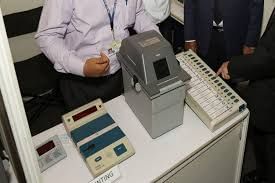
Why in News?
The ECI released a technical Standard Operating Procedure (SOP) on July 16 for verifying burnt memory in EVMs and VVPATs, following an April Supreme Court verdict.
Case Before the Supreme Court
- The Supreme Court reviewed a challenge about the reliability of Electronic Voting Machines (EVMs).
- The judgment, delivered on April 26, 2024, during the Lok Sabha election, upheld the EVM-VVPAT system.
- The court rejected requests to return to paper ballots and for 100% counting of VVPAT slips.
- The court instructed the Election Commission of India (ECI) to allow second and third-placed candidates to request verification of burnt memories of EVMs and VVPATs for up to 5% of machines in an Assembly constituency or Assembly segment of a Lok Sabha constituency.
Court's Orders
- Verify burnt memory/microcontroller in 5% of the EVMs (control unit, ballot unit, and VVPAT) per assembly constituency/assembly segment of a parliamentary constituency for tampering or modification.
- Second and third-placed candidates can request verification in writing.
- Candidates or their representatives can be present during verification.
- Requests for verification must be made within seven days of the results.
- The ECI will notify the costs, which the requesting candidate must pay. Expenses will be refunded if tampering is found.
Verification Process of EVMs and VVPATs
Technical SOP by ECI
- Mock Poll:
- Conduct a mock poll of up to 1,400 votes per machine in the presence of candidates or their representatives.
- Result Comparison:
- If machine results match VVPAT slips, it indicates no tampering.
- Selection of Machines:
- Candidates can choose the polling stations, EVMs, BUs, CUs, and VVPATs to check.
- Verification Team:
- Engineers from EVM manufacturers Bharat Electronics Ltd (BEL) and Electronics Corporation of India Ltd (ECIL) will perform checks.
- Technical Methods:
- Various methods will be used to verify the microcontroller firmware through a public process.
Start of Verification Process
- Verification will start after High Courts confirm no Election Petitions are filed regarding the constituencies.
- Election Petitions can be filed within 45 days of the results, which were announced on June 4 (deadline July 19).
- Eleven applications have been received, covering 118 polling stations or sets of EVMs and VVPATs, from candidates of BJP, Congress, DMDK, and YSRCP.
Way Forward
- Enhanced Transparency and Confidence:
- Regular and public verification processes involving political parties and independent observers to build trust in the electoral system.
- Technological Upgradation and Training:
- Upgrade EVM technology and provide comprehensive training for election officials and engineers to ensure accurate verification and operation of voting machines.
GS-III/Science and Technology
‘Telecom sector awaits next frontier in communications via policy reform’
Source: The Hindu

Why in News?
The telecom industry has proposed several policy recommendations to the Ministry of Communications that are essential to realize the Government’s vision of promoting digital empowerment and inclusivity.
Abolishment of USOF Levy:
- The telecom industry proposes the elimination of the Universal Service Obligation Fund (USOF) levy, which imposes a financial burden on telecom service providers (TSPs).
- This would allow resources to be redirected towards investment in new technologies such as 5G and network upgrades.
- The USOF is funded by a 5% levy on the Adjusted Gross Revenue (AGR) of telecom operators.
Reduction of License Fee:
- The industry recommends reducing the license fee from 3% to 1%.
Clarity in Gross Revenue Definition:
- There's a call for clear definitions of Gross Revenue (GR) to exclude non-telecom activities from tax calculations.
Service Tax Exemption on Additional AGR Liabilities:
- Exemption from Service Tax on additional AGR liabilities is crucial for the industry's financial recovery and efficient 5G rollout.
- The AGR has led to massive dues, amounting to over ₹1.5 lakh crore, which companies like Bharti Airtel and Vodafone Idea have to pay.
Reduction of Customs Duty:
- The telecom industry suggests reducing Customs Duty to zero for telecom manufacturing, with gradual increases for 4G and 5G products.
- Renewal of Customs Duty exemptions for submarine cable vessels is also recommended to avoid future cost increases.
Spectrum Allocation
- 6 GHz Spectrum for 5G Deployment:
- Prioritize the allocation of the 6 GHz spectrum for 5G deployment in India.
- Strategically plan the 6 GHz spectrum for future 6G technologies to enhance network quality, coverage, and support advanced applications like telemedicine and smart cities.
- Introduction and Addressing Critical Issues:
- The Telecommunications Act 2023 should address important issues such as Right of Way (RoW) for telecom infrastructure.
- Standardize RoW rules across states, simplify licensing processes, and separate telecom infrastructure from property taxes to facilitate faster 5G deployment.
- Swift Implementation of Regulatory Reforms:
- Emphasize quick implementation of regulatory reforms to reduce bureaucratic delays and operational hurdles.
- Ensure clarity and uniformity in RoW regulations to create a favorable environment for telecom investments, improving the Ease of Doing Business (EoDB) in the sector.
- The government should prioritize the implementation of proposed policy reforms, including the reduction of levies and taxes, clear revenue definitions, and spectrum allocation for 5G and future 6G technologies.
- Timely execution of these recommendations will enhance investor confidence, accelerate infrastructure development, and improve digital connectivity nationwide.
GS-III/Science and Technology
As thoughts become digitised, who will protect our neurorights?
Source: The Hindu
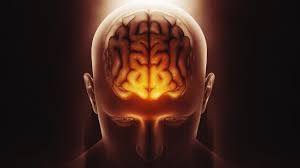
Why in News?
Many researchers anticipate the imminent development of wearable EEGs capable of enhancing human cognitive functions directly.
Neuralink and Brain-Computer Interfaces
Neuralink:
- Founded by Elon Musk in 2016.
- Develops a brain-computer interface called "the Link."
- This neural-chip implant is designed to decode and stimulate brain activity.
- The first device was implanted in a patient’s brain in January 2024.
Key Concepts in Neuroscience
EEG:
- EEG stands for electroencephalogram.
- Records electrical activity in the brain.
- Useful for monitoring brain functions and diagnosing neurological conditions.
Neuroscience:
- The scientific study of the nervous system, including the brain, spinal cord, and peripheral nerves.
- Combines various approaches to understand the structure, function, and disorders of the nervous system.
Neuro-data:
- Data related to the nervous system, especially the brain.
- Collected through neuroscience research and clinical studies.
Significance of Neuro-data:
- Medical Advancements:
- Precise diagnosis and personalized treatment of neurological disorders.
- Continuous monitoring of brain health and early detection of abnormalities.
- Technological Innovation:
- Supports the development of brain-computer interfaces (BCIs) and wearable neurodevices.
- Enhances rehabilitation options for individuals with neurological impairments.
- Research and Insights:
- Provides data for studying brain functions, cognition, and behavior.
- Fuels advancements in neuroscience, leading to new therapies and interventions.
Neurorights
- Right to Mental Privacy:
- Protection against unauthorized access to neural data.
- Ensures confidentiality in the use of neurotechnologies.
- Right to Neurological Integrity:
- Autonomy over neurological functions and activities.
- Freedom from undue manipulation or coercion through neurotechnological interventions.
Neuroethics
- Addresses the ethical, legal, and social implications of advancements in neuroscience and neurotechnologies.
- Ensures that the development and application of these technologies benefit humanity while minimizing harm.
Opportunities and Concerns with Digitization of Neuro-data
Opportunities:
- Enhanced Cognitive Assistance:
- Wearable EEGs and neurotech devices aid cognitive functions.
- BCIs like Neuralink help physically impaired individuals restore lost functions.
- Medical Advancements:
- Real-time health monitoring and personalized healthcare.
- Improved diagnosis and treatment of brain disorders through detailed neuro-data.
- Commercial and Research Value:
- Insights for neuromarketing to understand and influence consumer behavior.
- Integration with Daily Life:
- Smartwatches and apps track physiological activities and emotions, integrating neurotech into everyday activities.
Concerns:
- Surveillance Risks:
- Potential misuse of neuro-data by employers, governments, and private companies.
- Privacy and Security:
- Threats to mental privacy and autonomy with the collection and analysis of sensitive neuro-data.
- Ethical and Legal Challenges:
- Ethical dilemmas in mental privacy, consent, and the use of neurotech in various societal contexts.
- Impact on Individual Rights:
- The right to think freely and safeguard one’s mental state from monitoring could be compromised.
- Digitized health data’s commercial value could lead to exploitation and loss of personal control.
Initiatives Related to Neuroethics
- Institutional Efforts:
- U.S. Presidential Commission on Bioethics: Published the ‘Gray Matters’ report in 2015, addressing cognitive enhancement, consent capacity, and legal implications of neuroscience.
- Global Initiatives:
- OECD Recommendations (2019): Principles for safeguarding personal brain data and monitoring potential misuse of neurotechnologies.
- UNESCO’s Concerns (2022): Issues related to human identity, freedom of thought, and privacy, emphasizing the risks of unauthorized access to neural data.
- Research and Training:
- Institute of Neuroethics (2023): Emphasized proactive consideration of scientific advances and incorporating ethics into research training.
Conclusion
- Governments and international bodies should collaborate to create robust regulations governing the collection, use, and sharing of neuro-data.
- Regulations should ensure ethical use of neurotechnologies, protecting mental privacy, consent, and individual rights.
GS-II/Polity and Governance
PM SHRI (PM Schools for Rising India) Scheme
Source: Indian Express

Why in News?
After Punjab, West Bengal, and Delhi refused participation in the PM-SHRI scheme, the Education Ministry has stopped funds to the three states under the Centre's flagship Samagra Shiksha Abhiyan (SSA).
PM SHRI Scheme Overview
Objective:
- Establish over 14,500 PM SHRI Schools across India.
- Managed by Central Government, State/UT Governments, local bodies, Kendriya Vidyalaya Sangathan (KVS), and Navodaya Vidyalaya Samiti (NVS).
- Aim to create an inclusive, secure, and enriching learning environment for every student.
- Provide diverse learning experiences and access to good physical infrastructure and appropriate resources.
Purpose:
- Nurture students to become engaged, productive, and contributing citizens.
- Aligns with the National Education Policy 2020, promoting equity, inclusivity, and pluralism.
Features of PM SHRI Schools
Holistic Development:
- Focus on enhancing cognitive development and creating well-rounded individuals.
- Equip students with key 21st-century skills.
Pedagogy:
- Experiential, holistic, and integrated learning.
- Play/toy-based learning, particularly in the foundational years.
- Inquiry-driven, discovery-oriented, learner-centred, discussion-based, flexible, and enjoyable methods.
Infrastructure:
- Upgraded labs, libraries, and art rooms.
- Developed as green schools with water conservation, waste recycling, and energy-efficient infrastructure.
- Integration of organic lifestyle practices in the curriculum.
Learning Outcomes:
- Focus on the learning outcomes of every child in every grade.
- Assessments based on conceptual understanding and application of knowledge to real-life situations.
- Competency-based evaluations.
Quality Assessment:
- Development of a School Quality Assessment Framework (SQAF) with key performance indicators.
- Regular quality evaluations to ensure desired standards are maintained.
Duration and Cost
- Scheme Duration: 2022-23 to 2026-27.
- Post 2026-27, States/UTs will be responsible for maintaining the achieved benchmarks.
- Total Project Cost: ₹27,360 crore over 5 years.
- Central share: ₹18,128 crore.
GS-I/Geography
 |
Download the notes
UPSC Daily Current Affairs: 17 July 2024
|
Download as PDF |
Tizu River
Source: Deccan Herald
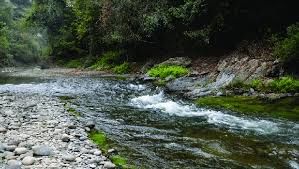
Why in News?
The Union Minister of Ports, Shipping and Waterways recently announced that the ministry has decided to carry out feasibility studies to use the National Waterways-101 on the Tizu Zunki River for the transportation of cargo and passengers.
Overview:
- Nagaland's four main rivers: Doyang, Dhansiri, Dhiku, and Tizu.
- Flow Direction:
- Doyang, Dhansiri, and Dhiku flow westwards to join the Brahmaputra in Assam.
- Tizu flows eastwards and southeastwards, eventually joining the Irrawaddy River in Myanmar.
Geography:
- Origin: Central part of Nagaland.
- Course:
- Flows northeast through Kiphire and Phek districts.
- Confluences with the Chindwin River in Myanmar, which then merges with the Irrawaddy River.
- The Irrawaddy River drains into the Andaman Sea via the Irrawaddy Delta.
Tributaries:
- Main Tributaries:
- Zungki: Largest tributary, originates from Changdong forest, flows southwards through Noklak, Shamator, and Kiphire, joining Tizu below Kiphire.
- Lanye
- Likimro
National Waterways 101 (Tizu-Zungki Waterway)
Purpose:
- To link Nagaland with the Chindwin River in Myanmar and beyond.
Route:
- Nagaland Side:
- Runs approximately 42 km from Longmatra in Kiphire to Avangkhu in Phek’s Meluri sub-division.
- Myanmar Side:
- Links up with the Chindwin River from Avangkhu.
- Extends to Tamanthi port, covering around 117 km.
Significance
- The Tizu River forms an important drainage system in the eastern part of Nagaland, contributing significantly to the region's hydrology and ecosystem.
- The National Waterways 101 aims to enhance connectivity and trade between Nagaland and Myanmar, promoting economic development and regional integration.
GS-III/Environment and Ecology
Jerdon’s Courser
Source: Times of India

Why in News?
Jerdon’s Courser, a critically endangered species, has not been visually spotted in over a decade.
About Jerdon’s Courser:
- It is a nocturnal cursorial (adapted for walking and running) bird endemic to the Eastern Ghats of India.
- Scientific Name: Rhinoptilus bitorquatus
- It was considered to be extinct from the beginning of the 20th century until its rediscovery in 1986.
- Habitat: It inhabits open patches within scrub forests.
- Distribution: It is found only in Andhra Pradesh and Telangana.
- Features:
- It is a delicate lapwing-like bird with a large eye and a short, bicolored bill.
- Its upper plumage is grey-brown, chin and throat are whitish, fore-neck is rufous and separated from its brown breast by a white band.
- A second white band runs across the lower portion of its breast (hence it was earlier called a double-banded courser).
- The belly is whitish, while its tail is black-and-white (visible in flight). The legs are pale yellow.
- The call is a short series of two-noted whistles “tuick-tuoo.”
- They are insectivorous, hunting invertebrates by sight.
- Conservation Status:
- IUCN Red List: Critically Endangered
|
39 videos|4566 docs|979 tests
|























